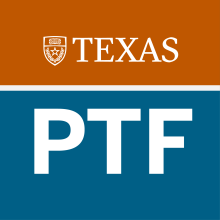Individual Fellow Initiatives

Clinical Advancement in Simulated Environments
Cohort: 2015
Fellow: Courtney Byrd
Among the communication disorders considered to be fundamental to the scope of practice for speech-language pathologists, stuttering or what is also commonly referred to as a fluency disorder has historically been and continues to be the disorder for which most speech-language pathologists report minimal to no clinical or academic exposure and/or competency.

Dynamic Practice and Assessment System for Statistics Course(s)
Cohort: 2015
Fellow: Tasha Beretvas
Mastery of the use and interpretation of statistical techniques requires a lot of practice. Similarly, statistics is only mastered with a lot of practice. However, instructors unfortunately only have a finite amount of time available to create an endless supply of new problems and associated answers. They also do not have an endless amount of time to provide hints to help students find their own way past their misconceptions. In addition, it is very difficult for students to receive immediate feedback to understand what they are doing and what they need to do.

Use of Standard Patients in an Observed Structured Clinical Exam
Cohort: 2015
Fellow: Renee Acosta
The College of Pharmacy curriculum is designed for the students to begin with a foundation of knowledge that they then practice in a laboratory setting followed by application in a real world setting. This project will provide students in the Nonprescription Pharmacotherapeutics/Self-Care sequence opportunity to gain constructive feedback and more consistent practice of their skills prior to moving on to the Community Pharmacy - Introductory Pharmacy Practice Experience in their third year and Advanced Pharmacy Practice Experience in their fourth-year.

McCombs Student Journal
Cohort: 2015
Fellow: Sanford Leeds
The McCombs Business Journal was an effort to give students an opportunity to read and write about research. We recruited students, worked with the students to establish an organizational structure, set expectations for members, and selected student leaders. Students read a significant amount of research and wrote summaries, focusing on how that research impacts the real world.

